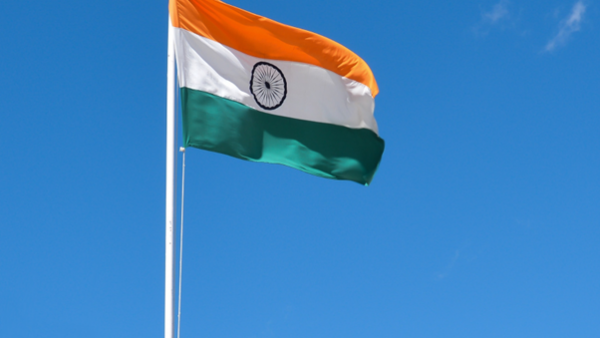India’s Linguistic Diversity: A Global Localization Influence

Introduction
Every year, on the 15th of August, India stands united in celebration of its Independence Day. This day commemorates the nation’s hard-fought freedom from colonial rule, a testament to the resilience and determination of its people. Beyond its historical significance, India’s vibrant cultural tapestry and diverse linguistic landscape have significantly impacted various industries around the globe, particularly the thriving field of localization. As we observe Independence Day, it’s an opportune moment to delve into how India’s multitude of languages have left an indelible mark on the localization industry, fostering connectivity and understanding across borders and cultures.
Significance of Independence Day on August 15th
August 15th holds a special place in the hearts of Indians, serving as a reminder of the sacrifices made by countless individuals who fought for the country’s freedom. It was on this day in 1947 that the Indian subcontinent finally shook off the chains of colonialism, breaking free from centuries of foreign rule. Independence Day stands as a symbol of unity, a celebration of diversity, and a testament to the power of collective determination. Beyond the parades and flag hoisting, it’s a day of reflection, gratitude, and renewal of commitment to the principles of democracy and equality.
The Impact of India’s Diverse Languages on the Localization Industry
India’s linguistic diversity is both astonishing and awe-inspiring. Within its borders, one can find an astonishing array of languages, dialects, and linguistic nuances that reflect the country’s deep-rooted cultural heritage. While Hindi stands as the official language, there are an astounding 22 officially recognized languages and a staggering 780 different languages spoken across the subcontinent. This linguistic mosaic, spanning from the northernmost regions to the southern tip, has profoundly influenced the localization industry.
Localization, in essence, is the art of adapting content, products, and services to cater to the linguistic and cultural preferences of diverse target audiences. In an increasingly interconnected world, where businesses seek to expand their reach beyond borders, effective localization is paramount. India’s linguistic diversity has been a catalyst for the localization industry’s growth. Companies recognize that to truly connect with audiences on a global scale, they need to speak the language of their customers, not just in terms of words, but also in terms of cultural sensibilities.
The localization process goes beyond mere translation; it involves a comprehensive understanding of cultural nuances, idioms, and even color preferences. India’s language landscape, with its myriad dialects and regional preferences, has provided localization professionals with valuable experience in navigating these intricacies. As companies aim to reach diverse markets with personalized content, the expertise born out of dealing with India’s linguistic diversity has proven invaluable.
Moreover, the localization industry in India has not only catered to the domestic market but has also become a hub for international clients seeking to tap into the diverse linguistic expertise that the country offers. This trend has fostered cross-cultural collaborations and has significantly shaped how content, products, and services are presented and received on a global scale.

India’s Linguistic Diversity
Overview of India’s Vast Array of Languages
India’s linguistic diversity is a remarkable facet of its cultural tapestry. Within its borders, one can uncover a breathtaking mosaic of languages, each with its own history, script, and unique identity. While Hindi serves as the official language, the country boasts an astonishing 22 officially recognized languages and an estimated 780 different languages spoken across its diverse landscape. This staggering linguistic variety is a testament to the rich tapestry of cultures and traditions that have evolved over millennia.
From the snow-capped peaks of the Himalayas to the sun-soaked beaches of the Indian Ocean, every corner of India resonates with the cadence of its local languages. This linguistic wealth is a living museum, preserving the essence of ancient civilizations, invasions, and exchanges that have shaped the subcontinent’s identity.
Importance of Regional Languages in Daily Life
In India, language is not just a means of communication; it’s a reflection of identity, heritage, and a deep sense of belonging. Regional languages play an integral role in people’s daily lives, permeating every aspect of their existence. From the comforting lullabies sung by mothers to their children to the eloquent speeches delivered by leaders, these languages serve as vessels of emotions, knowledge, and tradition.
In villages and towns across India, regional languages are the threads that weave together the fabric of community life. They are the medium through which stories are passed down through generations, ancient rituals are performed, and age-old wisdom is shared. Regional languages are the heartbeat of local commerce, where vendors haggle at markets, artisans discuss their crafts, and farmers exchange insights about crops.
Moreover, these languages hold immense significance in education. Children start their educational journey in their mother tongue, allowing them to grasp concepts more effectively and establish a strong foundation. As they progress, they often transition to a more widely spoken language like English or Hindi, illustrating the multilingual nature of India’s educational landscape.
India’s regional languages are also the soul of its diverse artistic expressions. Literature, music, dance, and theater are all deeply rooted in linguistic traditions. From the eloquent verses of Urdu poetry to the intricate rhythms of Carnatic music, these languages breathe life into artistic forms that have endured for centuries.
Influence on the Localization Industry
How India’s Linguistic Diversity Led to Localization Demand
India’s linguistic diversity has been a driving force behind the increasing demand for localization services, both within the country and on the global stage. With a multitude of languages and dialects spoken across different regions, businesses quickly realized that a one-size-fits-all approach would not suffice in a market as diverse as India. This realization sparked the need for tailored content and experiences that resonate with the linguistic and cultural preferences of various local audiences.
For instance, a marketing campaign that thrives in one part of India might fall flat in another due to linguistic differences and cultural nuances. To truly connect with their audience, companies recognized the importance of adapting not only the language but also the content, imagery, and presentation to align with local sensibilities.
Localization vs. Translation: Understanding the Difference
While translation and localization are closely related, they are not interchangeable terms. Translation involves converting text from one language to another while striving to maintain the original meaning. Localization, on the other hand, goes a step further by adapting content to suit the target culture’s language, customs, preferences, and idioms. It’s about ensuring that the content doesn’t just communicate accurately but also resonates emotionally with the audience.
Imagine a global tech company launching a new product in India. Merely translating the user manual wouldn’t suffice. Effective localization would involve adjusting technical jargon, incorporating culturally relevant examples, and even adapting the design and layout to ensure the user’s experience is seamless and intuitive.
Industries Influenced by Indian Languages in Localization
India’s languages have influenced several industries, both domestically and internationally, through the process of localization:
Entertainment:
The Indian film and music industries, particularly Bollywood, have garnered a massive international following. Subtitling, dubbing, and adapting content for global audiences have opened doors for the localization of Indian movies and music.
Technology:
India’s growing IT sector, with its multilingual user base, has driven the demand for software localization. Companies catering to Indian users understand the importance of offering products in multiple languages for a seamless experience.
E-commerce:
As more Indians engage in online shopping, e-commerce platforms are leveraging localization to make their interfaces user-friendly and relatable, thereby enhancing the user experience.
Education:
E-learning platforms are realizing the potential of localizing content to cater to different regions and languages. This approach not only aids comprehension but also makes learning engaging and culturally relevant.
Marketing and Advertising:
Brands entering the Indian market have discovered the need for culturally sensitive marketing campaigns. From adjusting taglines to incorporating local festivals, effective localization enhances brand resonance.
Prominent Indian Languages in Global Industries
Hindi: Breaking Language Barriers in Business
Hindi, as India’s most widely spoken language, has transcended national borders to become a language of global significance. Its prevalence in Bollywood, the Indian film industry, has introduced millions to the nuances of Hindi. This cinematic outreach has given businesses a unique advantage when connecting with Hindi-speaking communities worldwide.
In the business world, Hindi localization has played a pivotal role in breaking language barriers. Global companies seeking to tap into the vast Indian market recognize that engaging with consumers in their native language can significantly enhance brand loyalty and customer engagement. From localized product descriptions to customer support, Hindi opens doors to seamless communication and effective outreach.
Bengali: Cultural and Literary Influence Worldwide
Bengali, with its rich literary heritage and cultural influence, has touched hearts beyond India’s borders. The works of Nobel laureate Rabindranath Tagore have not only been translated but have also resonated deeply with audiences worldwide. This cultural exchange has spurred a demand for Bengali localization, particularly in the realm of literature, where Bengali classics find new life in different languages.
In industries such as publishing and content creation, Bengali localization enables the expansion of literary works to a global readership. Moreover, as the digital age blurs geographical boundaries, the demand for Bengali content on digital platforms continues to rise, bridging cultures and fostering cross-cultural understanding.
Tamil: Technological Advancements and Global Recognition
Tamil, one of the world’s oldest languages, has experienced a surge in global recognition, thanks in part to India’s thriving IT sector. Tamil Nadu’s tech prowess has brought the language into the global spotlight, with a growing demand for Tamil localization in software, websites, and apps.
Technological advancements and a large Tamil-speaking diaspora have led to an increased demand for Tamil content on various platforms. As Tamil content gains visibility, it not only serves the diaspora but also facilitates cross-cultural communication and collaboration in the business and academic realms.
Telugu: Rising Influence in the Entertainment Sector
The Telugu language, spoken primarily in the Indian states of Andhra Pradesh and Telangana, has witnessed a remarkable rise in the entertainment sector. Tollywood, the Telugu film industry, produces a significant number of films each year, and its popularity extends beyond India. This cinematic reach has fueled a demand for Telugu localization in subtitles and dubbing, connecting audiences globally.
As streaming platforms make content accessible worldwide, Telugu films and shows are reaching international viewers. Telugu localization has become an integral part of this expansion, ensuring that stories resonate across cultures and languages.

Marathi: Localization Opportunities in a Growing Market
The Marathi language, enriched by Maharashtra’s cultural and economic dynamism, is emerging as a key player in India’s localization landscape. With Maharashtra’s thriving business environment, Marathi localization offers companies the chance to tap into a market ripe with potential.
From e-commerce platforms to educational content, businesses are recognizing the need to engage with Marathi-speaking audiences in their language of choice. As Maharashtra’s influence grows, Marathi localization opens doors to connecting with consumers on a deeper level.
Kannada: Niche Markets and Untapped Potential
Kannada, spoken in the state of Karnataka, holds untapped potential in niche markets. While Kannada may not have the widespread recognition of languages like Hindi or Tamil, it possesses a unique cultural identity that resonates with its speakers. This identity has led to a demand for Kannada localization in areas such as literature, art, and local businesses.
As businesses explore niche markets, Kannada localization provides an avenue for engaging with specific communities. The ability to offer products, services, and content in Kannada reflects a commitment to diversity and inclusivity, fostering a stronger bond between businesses and consumers.
Languages to Watch for Global Scaling
Urdu: Bridging Gaps in International Communication
Urdu, with its roots in the Indian subcontinent, is poised to play a significant role in global communication. Its widespread use in countries like India, Pakistan, and the Middle East positions it as a bridge language, enabling cross-border conversations and facilitating international business interactions. As companies seek to expand their global footprint, investing in Urdu localization can help bridge linguistic gaps, making communication more effective and inclusive.
Malayalam: Evolving Media and Content Consumption
Malayalam, spoken in the southern Indian state of Kerala, is undergoing a transformation in the digital age. With a tech-savvy population, Kerala has witnessed a surge in online content consumption, ranging from videos and articles to social media engagement. This shift presents an opportunity for companies to tap into the Malayalam-speaking audience by offering localized content that resonates with their cultural sensibilities and preferences.
Punjabi: Cultural Impact and Diaspora Communities
The Punjabi language has a significant cultural impact, driven by its association with vibrant music, films, and a global diaspora. With communities spread across countries like Canada, the United Kingdom, and the United States, Punjabi localization holds immense potential. Companies looking to connect with Punjabi-speaking audiences can engage with their culture through tailored content, creating a strong bond that transcends geographical boundaries.
Gujarati: Business Potential and Diaspora Influence
Gujarati, spoken by millions in the Indian state of Gujarat and around the world, holds both business potential and diaspora influence. Gujarat’s reputation as an economic powerhouse and its widespread diaspora creates opportunities for businesses to connect with a global Gujarati-speaking audience. Localization in Gujarati not only opens doors to tapping into this market but also demonstrates an understanding of the community’s unique identity and values.
Odia: Emerging Opportunities in Digital Platforms
Odia, spoken in the coastal state of Odisha, is on the cusp of digital transformation. As more Indians gain access to the internet, Odia speakers are exploring digital platforms for information, entertainment, and communication. This shift presents emerging opportunities for businesses to engage with Odia-speaking audiences through localized content. From e-commerce to social media, investing in Odia localization can help businesses establish a strong digital presence in this growing market.
Recognized Indian Languages in Other Countries
English: India’s Linguistic Bridge to the World
English, a legacy of British colonial rule, has become India’s linguistic bridge to the world. While India boasts a rich tapestry of languages, English serves as a unifying medium for communication among diverse linguistic communities within the country. Moreover, it has positioned India as a global player in various industries, including technology, business, and academia.
Beyond India’s borders, English plays a vital role in connecting the country to the international community. As a widely spoken second language, it enables Indians to engage with the world, facilitating trade, diplomacy, and cultural exchange. India’s proficiency in English has made it a key outsourcing destination for customer service, IT services, and content production, further enhancing its global influence.
French: Pondicherry’s French Connection
In the southeastern corner of India lies Pondicherry, a former French colony. This quaint city carries the remnants of its colonial past, including the French language. While English and Tamil are the official languages, French still holds cultural and linguistic significance in Pondicherry.
The French connection in Pondicherry has led to a unique blend of cultures and languages. It serves as a reminder of India’s colonial history and its ability to embrace diverse linguistic influences. French localization services in Pondicherry contribute to maintaining the city’s distinct identity and fostering connections with Francophone communities around the world.
Portuguese: Influence on the Western Coast’s Languages
Portuguese colonialism left an indelible mark on India’s western coast, particularly in the states of Goa and parts of Karnataka. Even though the Portuguese rule ended centuries ago, the influence of the language remains in place names, cultural practices, and, to a certain extent, linguistic elements.
This linguistic legacy has created a unique linguistic blend along the western coast. While Konkani and other regional languages are prevalent, traces of Portuguese can be found in vocabulary, idioms, and traditions. The Portuguese influence highlights India’s ability to assimilate foreign languages and cultures, resulting in a rich tapestry of linguistic diversity.

Future Trends in Indian Localization
Growing Importance of Regional Languages in Online Content
As technology breaks down geographical barriers, the internet has become a hub for global communication. In this digital era, regional languages are set to play a more significant role in shaping online content. The demand for localized content that resonates with local audiences will continue to rise. Businesses and content creators will increasingly recognize the need to cater to diverse linguistic preferences to foster deeper connections and engagement.
From social media posts to e-commerce websites, companies will prioritize the inclusion of regional languages to capture the attention of non-English-speaking users. This trend will not only promote inclusivity but also offer businesses a competitive edge in tapping into previously underserved markets.
Technology-Driven Advancements in Machine Translation
Machine translation has come a long way, thanks to advancements in artificial intelligence and natural language processing. While human translators remain essential for nuanced and context-specific content, machine translation is rapidly evolving to assist in the localization process.
In the future, we can expect more accurate and contextually aware machine translation tools. This will streamline the localization workflow, making it more efficient and cost-effective for businesses looking to expand their reach. However, human oversight and cultural understanding will remain critical to ensure that machine-generated translations capture the nuances of language and cultural context accurately.
Cross-Cultural Collaboration and Its Impact on Localization
Globalization has ushered in an era of cross-cultural collaboration, where businesses collaborate with partners and customers from different linguistic backgrounds. This trend will significantly impact the localization industry. Companies will not only need to tailor their content for specific markets but also navigate the complexities of cultural sensitivities.
Cross-cultural collaboration will necessitate a deep understanding of local customs, etiquette, and communication styles. Localization professionals will play a crucial role in ensuring that content resonates appropriately across cultures, fostering positive relationships and enhancing brand reputation on a global scale.
Conclusion
As India’s Independence Day approaches, it is a time not only to reflect on the nation’s journey towards freedom but also to celebrate its remarkable linguistic diversity. The multitude of languages spoken across this vast land is a testament to India’s rich cultural heritage and its ability to weave together diverse identities into a harmonious tapestry.
Independence Day serves as a poignant reminder of the struggles and sacrifices that paved the way for a united, sovereign nation. Beyond the historical significance, this day also presents an opportunity to acknowledge the ongoing impact of India’s languages on the global stage, particularly in the realm of localization.
India’s linguistic diversity has breathed life into the localization industry, transforming it into a force that bridges linguistic and cultural gaps. The demand for tailored content, products, and services that resonate with local audiences has underscored the importance of localization in effective communication. As businesses seek to expand their reach across borders, India’s vast array of languages offers a unique advantage in reaching diverse audiences.
Looking ahead, India’s role in shaping the global localization landscape is set to continue. As technology advances, machine translation and AI-driven solutions will further streamline the localization process, making it more efficient and accessible. However, the human touch and cultural understanding will remain indispensable in ensuring accurate and nuanced localization that respects the intricacies of language and culture.
India’s languages will continue to influence various industries, from entertainment and technology to business and education. The power of languages to connect, engage, and foster cross-cultural collaboration cannot be underestimated. India’s linguistic diversity is a testament to the nation’s openness to embrace different cultures and to find unity in the midst of diversity.
As we celebrate Independence Day and recognize India’s linguistic richness, let us also appreciate the role that languages play in shaping our global interactions. Whether through business endeavours, cultural exchanges, or personal connections, India’s languages stand as ambassadors of understanding, empathy, and connection in an increasingly interconnected world.

Made up your mind yet?
Empower your globalization goals today!




